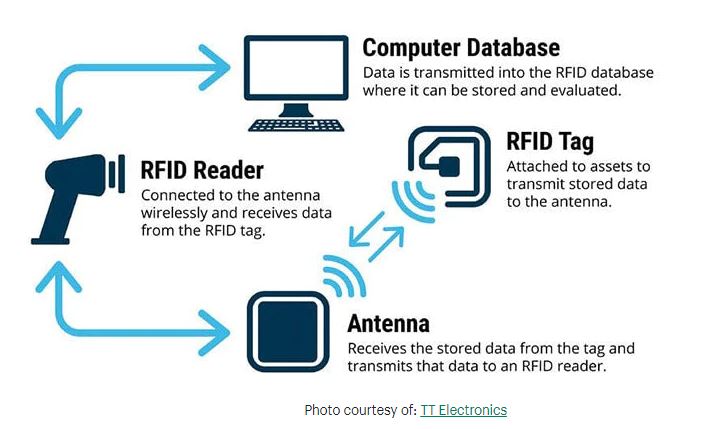RFID or radio-frequency identification technology continues to be an important aspect of inventory control management due to its automation capabilities and data collection. RFID can improve inventory accuracy, resulting in better management and a positive bottom line.
There are two types of readers:
- Fixed readers: these are installed in a specific location where RFID tag data passes. An example is checking out at a store through an RF zone, and the reader receives the tag data of the items you have purchased; think of Amazon Go.
- Mobile readers: These are handheld devices that can be carried anywhere; one example is our partners at RFgen.
Once you have the reader of choice, then the process of tracking is broken down into 4 phases noted above. Information is stored on an RFID Tag, an antenna recognizes the signal of that tag, and the reader can receive the information stored in the tag, and then send it to the database for storage and evaluation.
RFID can enhance inventory management far beyond just warning you when an item is getting low or is out of stock, it can assist in helping retailers identify high-traffic end caps, pinch points, and product paths throughout the day. As we mentioned above, it can also assist with contactless payments which have gained popularity since 2020 and have become a staple of convenience. Lastly, regarding labeling, RFID can also be used to label products and have some benefits that outweigh their barcode counterparts. Their read rates are much higher and faster and enable them to be read through objects as well as allow items to be uniquely identified by each item/asset that is tagged. They tend to be more efficient, durable, and secure.
RFID technology can enhance the work of warehouses and retailers everywhere. Any business with products that need to make it from point A to point B, can benefit from RFID technology. Pragmatyxs and our partners are ready to help your company gain efficiency and improve your inventory control through effective inventory management.
